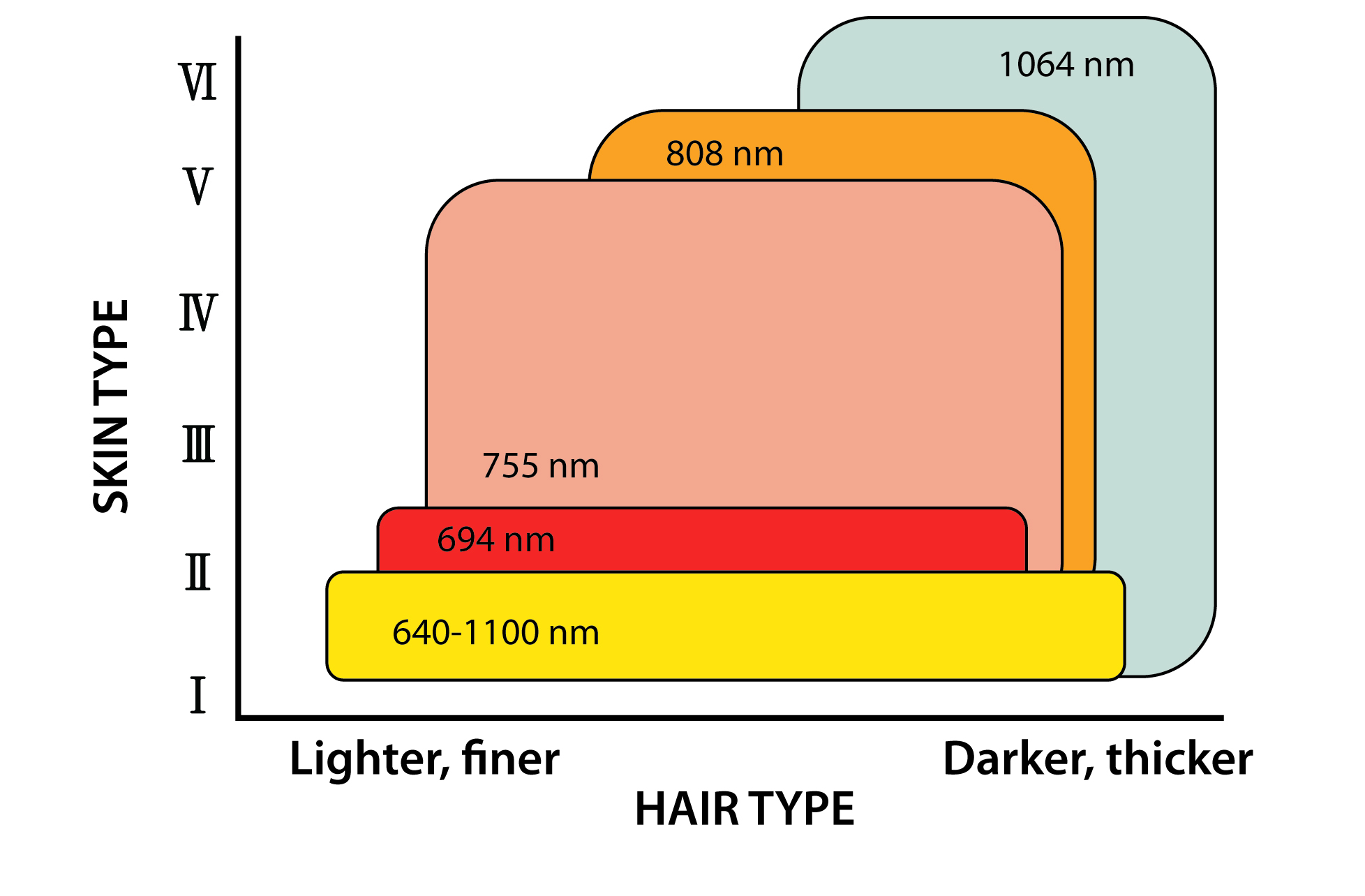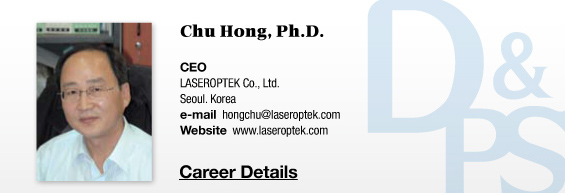▶ Previous Artlcle : #10-1. Long Pulse Laser
5) Long pulsed Nd:YAG laser (wavelength : 1064 nm)
Long pulsed Nd:YAG laser refers to a laser with variable pulse width ranging from 0.3 ms to about 300 ms. This is particularly widely used for telangiectasis caused by vasodilation and vascular lesions no larger than 4 mm (especially leg veins). The benefit of long pulsed Nd:YAG laser, compared to the above mentioned shorter wavelength lasers, is that it is absorbed less by melanin and can penetrate deeper. In addition, since the main chromophores of blue vein, methemoglobin and deoxyhemoglobin, have the maximum absorption coefficient at 1064 nm, it is much easier to treat blue veins. Adequately long pulse width allows slow and even heating of blood vessels, making them coagulated while avoiding purpura and hyperpigmentation after the laser treatment. It is still recommended to cool down the epidermis during the treatment to minimize post-procedural side effects.
HELIOSⅡ/LOTUSⅡ/HYPERION – Manufacturer: LASEROPTEK(www.laseroptek.com)
12-2. Lasers for hair removal
Each hair has different TRT depending on the thickness but generally has long TRT, which is why long pulse laser is used for hair removal. There are two types of lasers that are generally used for this purpose. As shown in figure 12-2, the thickness, color and depth of root of target hair as well as the color of skin should be considered to choose the right laser and wavelength. Since hair removal lasers usually destroy hair in the anagen phase (growth phase), the therapeutic effect is greater in areas with a lot of hair in the anagen phase, such as the forehead. However, arms, legs and the trunk, where having a lot of hair in the telogen phase (resting phase), need 5 to 6 or more sessions of procedures to remove hair. The number of retreatment session is usually determined by how much telogen hair has grown after the procedure.
1) Laser diode (wavelength : 810 nm)
Laser diode is a semiconductor, continuous laser. Long pulse operation can be obtained by turning on/off the current input into the semiconductor laser. The wavelength of laser diode has relatively better absorption rate for melanin than 1064 nm but does not allow deep penetration into the dermis, precluding complete removal of hair bulbs.
2) Long pulsed Nd:YAG laser (wavelength : 1064 nm)
As mentioned above, long pulsed Nd:YAG laser has relatively lower absorption rate for melanin pigments compared to that of laser diode but is most effective for hair removal because of the deep penetration depth. As shown in figure 12-2, it is less absorbed by melanin compared to other lasers, making it applicable to people of any skin type.

Figure 12-2. Response rate by wavelength according to skin and hair type
-To be continued-





















